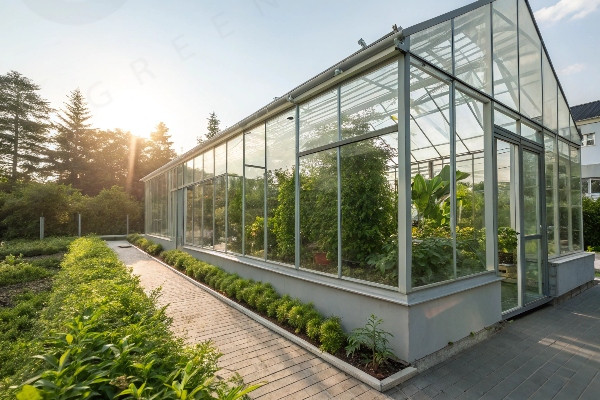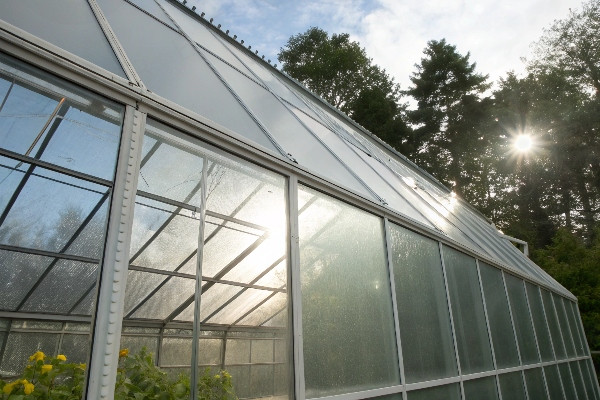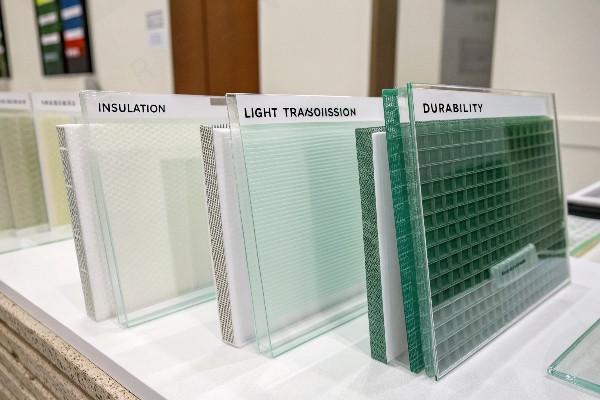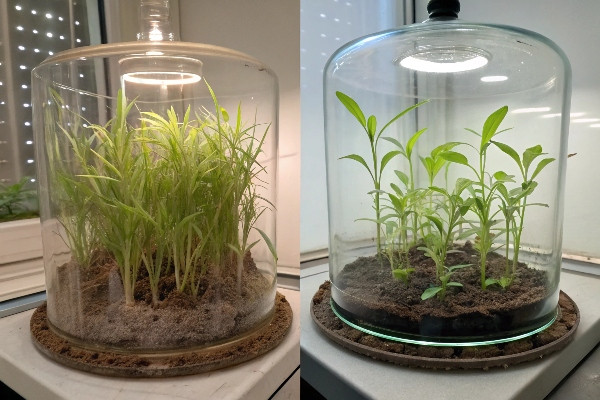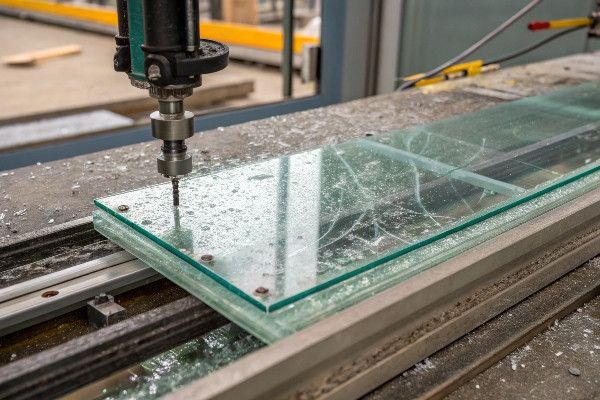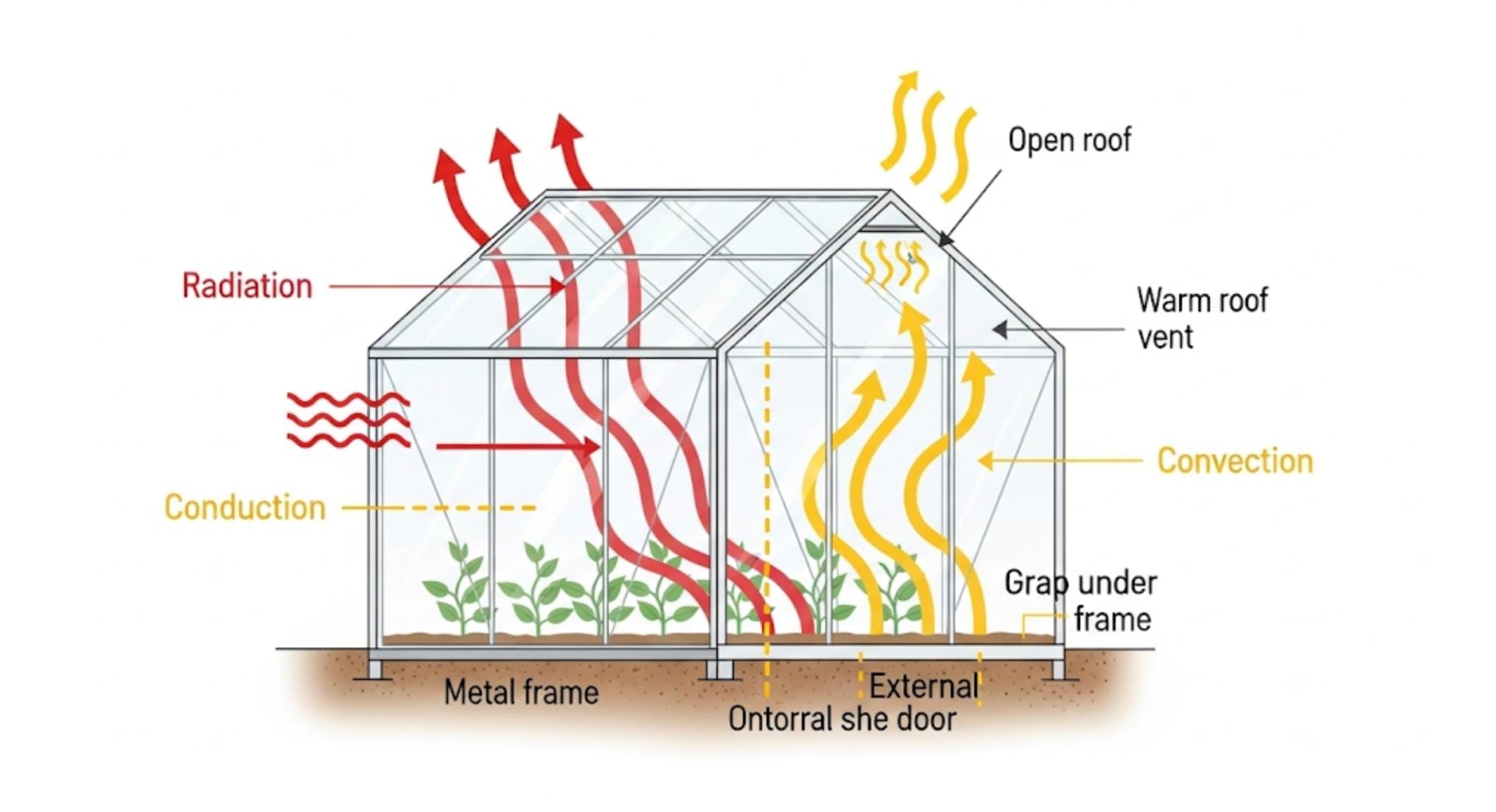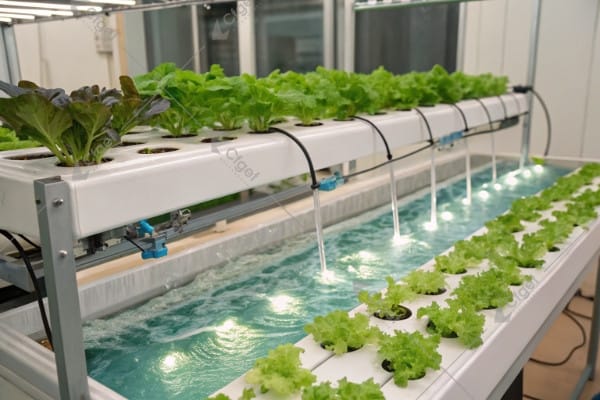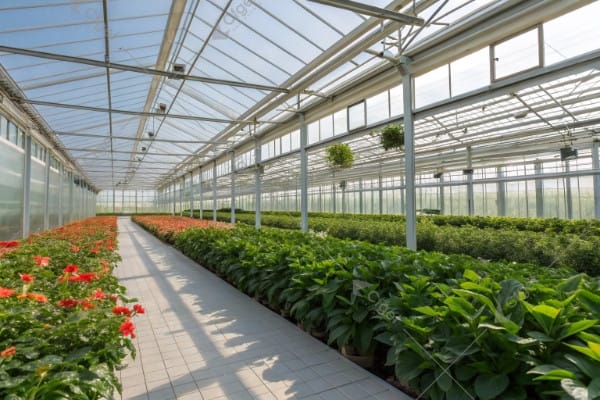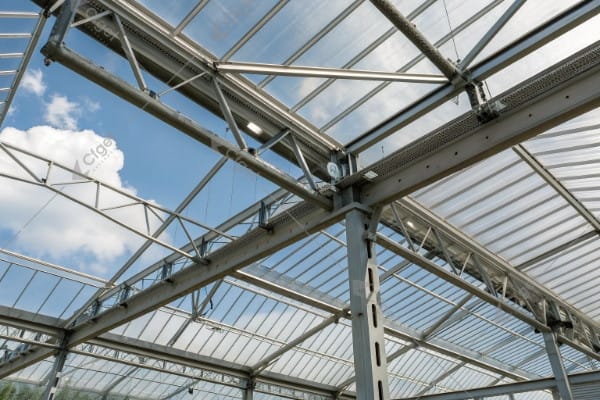Choosing the right glazing material for your greenhouse can be overwhelming. With so many options available today, you might wonder if traditional glass is still worth considering for your growing needs.
Glass remains the premier choice for greenhouse glazing because of its unmatched light transmission, durability exceeding 20 years, and aesthetic appeal. Modern greenhouse glass options include single-layer, hollow laminated, and specialized diffused glass that can be customized for various climates and growing requirements.
Sunlight streams through crystal-clear glass panels, nurturing thriving plants within.
My journey into greenhouse construction began over a decade ago when I was searching for the perfect environment to grow my collection of tropical plants. After experimenting with various materials, I kept returning to glass for its unmatched performance. In today’s post, I’ll share why glass continues to stand the test of time in greenhouse applications, and how you can select the perfect glass option for your specific needs.
Don’t Miss:——The Essential Guide to Cannabis Greenhouses: Maximizing Quality & Yield in Controlled Environments?
You might like:——[Unlock Blueberry Potential: Why a Greenhouse is Ideal for Growing?](https://cfgreenway.com/unlock-blueberry-potential-why-a-greenhouse-is-ideal-for-growing/ "Unlock Blueberry Potential: Why a Greenhouse is Ideal for Growing?")
The Enduring Benefits of Using Glass in Greenhouses?
Finding a greenhouse material that offers both longevity and optimal growing conditions is challenging. Many alternatives sacrifice light quality for cost savings, leaving your plants struggling to thrive.
Glass greenhouses provide superior light transmission with up to 90% of available sunlight reaching your plants. This exceptional clarity promotes healthier growth, better flowering, and higher yields compared to other materials. Additionally, glass retains its transparency for decades without yellowing or degradation in light quality.
Crystal clear glass panel showcases pure, undistorted light penetration.
When I first built my small backyard greenhouse, I opted for a budget-friendly polycarbonate material. Within three years, I noticed diminished plant growth as the material began to yellow and cloud. This experience taught me the true value of glass as a greenhouse material. While glass may have a higher initial investment, its enduring benefits make it economically advantageous over time.
The primary advantage of glass lies in its unparalleled transparency. Unlike plastic alternatives, glass transmits light without filtering out essential spectrums that plants need for photosynthesis. This means your plants receive a full spectrum of natural light, closely mimicking outdoor growing conditions. Additionally, glass maintains its clarity indefinitely without yellowing or degradation in light quality, which is a common issue with polycarbonate and other plastic glazing materials.
Glass greenhouses also offer superior temperature regulation capabilities. When properly designed, glass greenhouses can utilize specialized glazing options to maintain optimal growing environments. For example, in colder regions, hollow laminated glass provides excellent insulation properties, while in warmer areas, reflective glass can reduce excessive heat buildup.
From an aesthetic perspective, nothing matches the classic beauty of a glass greenhouse. The timeless elegance of glass structures enhances any garden or landscape, often becoming a visual focal point rather than merely a functional growing space.
Key Factors When Selecting Glass for Your Greenhouse Project?
Choosing inappropriate greenhouse glass can lead to excessive heating costs, poor plant growth, or even structural failures. Without proper knowledge, your investment could result in disappointing outcomes.
The optimal greenhouse glass depends on your climate, budget, and cultivation goals. Single-layer glass (3-4mm) works well in mild climates and offers excellent light transmission at lower cost. For colder regions, hollow laminated glass provides essential insulation, while diffused glass distributes light more evenly for shade-loving plants.
Multiple glass samples showing clear, diffused, and laminated options.
My experience with greenhouse glass selection has taught me that considering multiple factors is crucial for success. When I built my first commercial greenhouse in the northern climate, I initially chose standard single-pane glass to save costs. After the first winter brought excessive heating bills and cold spots that damaged plants, I realized the importance of matching glass specifications to specific growing conditions.
Temperature Management Considerations
The type of glass you select dramatically impacts your greenhouse’s internal temperature control. In regions with cold winters, double-glazed or hollow laminated glass provides significant insulation benefits. These options create an air pocket between glass layers that reduces heat loss by up to 50% compared to single-pane glass. For operations in hot climates, consider low-emissivity (low-E) or reflective glass that blocks a portion of the sun’s heat while still allowing light transmission.
Light Transmission Properties
Different glass types offer varying light transmission capabilities:
| Glass Type | Light Transmission | Best Application |
|---|---|---|
| Clear Single-Pane | 90-94% | Maximum light penetration, ideal for winter growing |
| Diffused Glass | 80-90% | Eliminates shadows, distributes light evenly |
| Tinted/Low-E Glass | 70-85% | Reduces excessive heat in warm climates |
| Double-Glazed | 80-85% | Balances insulation and light transmission |
The thickness of glass also plays a critical role in both durability and cost. Standard greenhouse glass typically ranges from 3mm to 6mm for single-pane applications. Thicker glass provides better insulation and strength against environmental stressors like wind and snow but adds weight to the structure and increases costs.
Maximizing Light and Longevity with Greenhouse Glass?
Poor light distribution in greenhouses creates uneven growth patterns and reduces productivity. Many growers struggle with hot spots, shadows, and inefficient space utilization without proper glass selection.
Modern greenhouse glass technology offers solutions like diffused glass, which breaks light into multiple angles to eliminate shadows and distribute sunlight evenly throughout your growing space. This specialized glass can increase productivity by up to 8% compared to traditional clear glass while extending the useful life of your greenhouse beyond 20 years.
Plants thrive under evenly distributed light from diffused glass panels.
When I renovated my commercial greenhouse facility five years ago, the most impactful change was upgrading to diffused glass on the roof panels. This single modification transformed our production by eliminating the harsh shadows that had created inconsistent growing conditions. The soft, even light penetrated deeper into the plant canopy, resulting in more uniform crops and higher yields across all seasons.
Diffused glass works by incorporating a specialized surface texture that scatters incoming light in multiple directions. This microscopic texturing appears slightly frosted but still maintains excellent overall light transmission. The key advantage comes from how this scattered light reaches plants from multiple angles, penetrating deeper into leaf canopies and reaching lower-growing plants that might otherwise be shaded.
For commercial growers, this light distribution efficiency translates directly to economic benefits. Studies have shown that proper diffused glass can increase crop yields by 5-10% depending on the plant variety, while simultaneously reducing energy costs associated with supplemental lighting.
Beyond light quality, modern greenhouse glass also addresses longevity concerns through advanced manufacturing techniques. Tempered glass options provide significantly improved impact resistance, important in regions with hail or high winds. Low-iron glass varieties offer enhanced clarity and light transmission compared to standard float glass, with minimal light spectrum filtering that can affect plant development.
For growers in northern climates, combining diffused properties with insulating glass technologies creates an optimal environment that balances light quality with energy efficiency. These dual-purpose glazing solutions represent the cutting edge of greenhouse technology, often paying for their higher initial investment through operational savings and improved crop performance.
Addressing Common Concerns: Is Greenhouse Glass Durable and Safe?
The thought of glass breakage in storms or accidental impacts causes many potential greenhouse owners to hesitate. Safety concerns and replacement costs create uncertainty about glass as a viable long-term solution.
Modern greenhouse glass is engineered for durability and safety. Tempered and laminated options can withstand significant impacts and adverse weather conditions. When properly installed in quality framing systems, glass greenhouses routinely last 25+ years with minimal maintenance, making them more cost-effective than replacing plastic alternatives every 5-10 years.
Tempered greenhouse glass withstands impact without dangerous shattering.
A common misconception I encounter when consulting with new greenhouse clients is that glass is inherently fragile and dangerous. My own experience contradicts this fear. During a severe hailstorm that damaged many polycarbonate greenhouses in our area, my tempered glass structure remained intact. The few replacement panels I’ve needed over 15 years were due to accidents rather than environmental factors.
Modern greenhouse glass technology has evolved significantly to address safety and durability concerns. Tempered glass, the same technology used in car windows, is heat-treated to create tension within the material. This process makes the glass approximately four times stronger than standard glass. If broken, tempered glass crumbles into small, rounded pieces rather than dangerous shards, significantly reducing injury risk.
For areas with extreme weather conditions, laminated glass provides another safety option. Similar to windshield technology, laminated glass sandwiches a layer of plastic between two glass sheets. This composition prevents shattering upon impact and holds broken pieces in place, maintaining structural integrity even after damage occurs.
The installation method also significantly impacts glass durability. Quality aluminum or steel framing systems with proper expansion joints accommodate the natural movement that occurs with temperature changes. Professional installation ensures appropriate overlap and sealing techniques that prevent water infiltration, which could otherwise lead to frame deterioration.
Cost considerations often favor glass when evaluated over the lifetime of the structure. While the initial investment is higher than polycarbonate or polyethylene alternatives, the extended lifespan (20+ years versus 5-10 for plastics) and consistent light transmission quality make glass more economical long-term. Additionally, glass maintains its property value better, with glass greenhouses generally commanding higher resale prices than those constructed with alternative materials.
Conclusion
Glass remains the premier greenhouse glazing material because of its unmatched light transmission, durability, and aesthetic appeal. By selecting the appropriate glass type for your specific climate and growing needs, you’ll create an optimal environment that maximizes plant growth while providing decades of reliable service.

